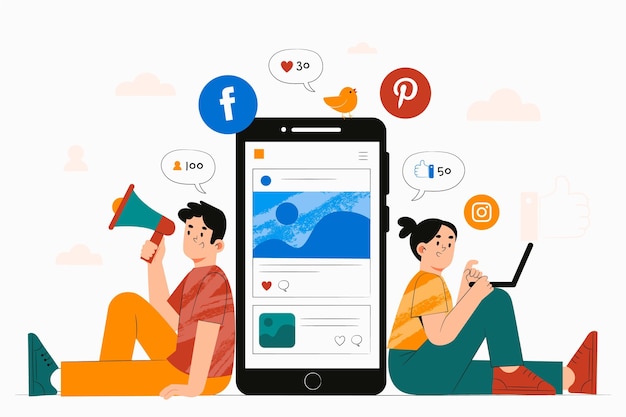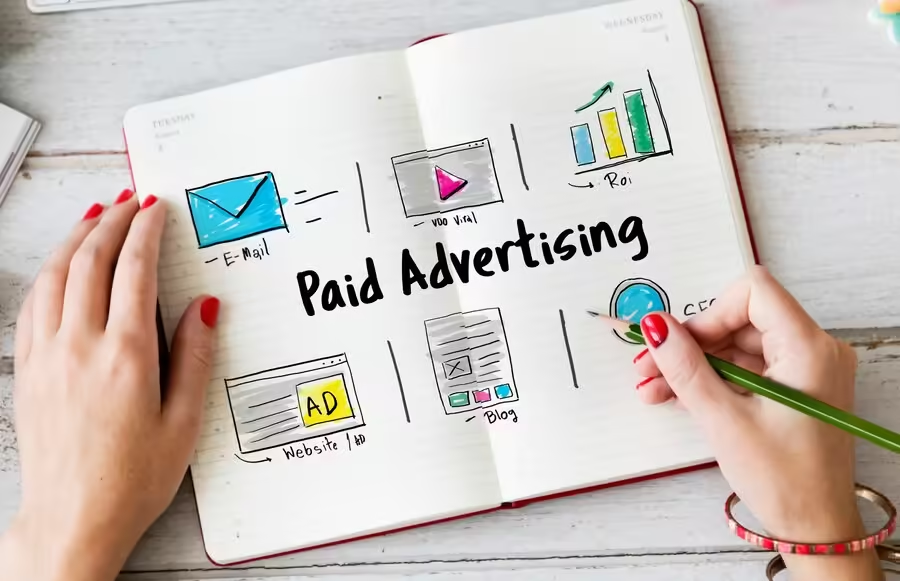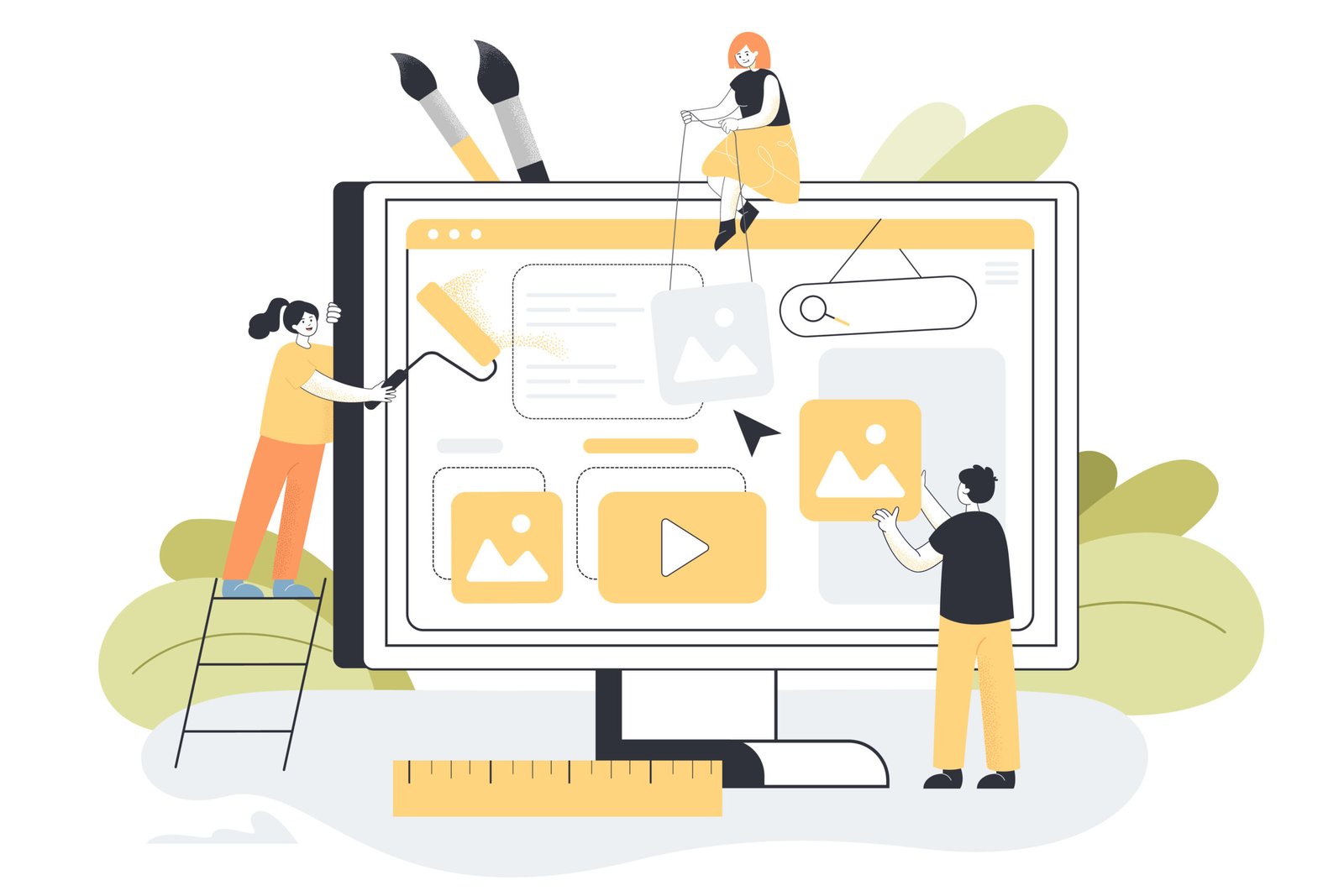Did you know that by 2027, global digital ad spending will surpass $626 billion? That’s a lot of zeros, and it shows just how much businesses globally are investing in reaching their customers online. What’s perhaps more interesting is that you don’t need to be a multinational to use paid media.
Whether you’re a small business owner in Lagos trying to get your name out there, or a growing e-commerce store looking to boost sales, paid media can work for you.
This ultimate guide will introduce you to online advertising. We’ll break down the different types of paid media, show you how to create campaigns that truly connect with your audience and help you track your results to make sure every naira counts.
What Exactly is Paid Media Advertising?

Paid media advertising is a type of digital marketing where you pay to place your message in front of an audience online.
Unlike some marketing tactics where you’re at the mercy of algorithms or hoping for the best, paid media puts you in the driver’s seat. You can choose where your ads appear, who sees them, and what message they convey.
You’re buying attention and traffic, intending to drive specific actions from your target audience, such as visiting your website, buying a product, or signing up for your newsletter.
Types of Paid Media Advertising

Now that you understand what paid media advertising is all about, let’s examine the different options available. Each type of paid media is useful and can be used to achieve different marketing goals.
1. Search Engine Marketing (SEM)
Imagine someone searching on Google for “best laptops in Nigeria.” At the top of the results page, they see ads for different laptop brands and retailers. That’s search engine marketing (SEM) in action.
SEM allows you to place text ads on search engine results pages (SERPs) when people search for specific keywords related to your business. It’s a highly effective way to reach potential customers who are actively looking for products or services like yours.
SEM uses a simple process. You bid on relevant keywords, and your ad appears when someone searches for those keywords. You only pay when someone clicks on your ad (pay-per-click or PPC).
For example, a digital marketing agency in Lagos could bid on keywords like “SEO services Lagos” or “digital marketing agency Nigeria” to reach businesses looking for their services. Google Ads is the most popular SEM platform with Google controlling 92% of the search engine market share
Benefits of SEM
- Highly targeted
- Measurable results
- Can drive immediate traffic and leads
2. Social Media Advertising
With billions of users worldwide, social media platforms like Facebook, Instagram, X (Formerly Twitter), TikTok, and LinkedIn have become powerful advertising channels. Of these IG, Facebook, and TikTok are the most popular among individuals while LinkedIn works well for B2B businesses.
Social media advertising allows you to target your ads based on demographics, interests, behavior, and more. For example, an online fashion retailer could use Facebook Ads to target women aged 18-35 in Lagos who have shown interest in fashion and online shopping.
After setting the ad targets, you can create visually appealing ads that appear in users’ news feeds or sidebars. Also, you can target your ads based on a wide range of criteria, ensuring your message reaches the right people.
Benefits of Social Media Advertising
- Massive reach
- Diverse ad formats
- Sophisticated targeting options
- Can build brand awareness and drive engagement
3. Display Advertising
Display advertising focuses on the visual ads you see on websites, often in the form of banners, sidebars, or eye-catching graphics. They’re a great way to get your brand noticed and reach people who might not be actively searching for your products or services.
For example, a new online bookstore in Nigeria could place display ads on book review websites, literary blogs, and news sites to reach book lovers and drive traffic to their online store.
Again, you create visually appealing ads and place them on websites that are relevant to your target audience. You can target your ads based on demographics, interests, and even the specific content of the website.
The Google Display Network is the largest display advertising network, reaching over 90% of internet users worldwide. It gives you access to a massive audience and a wide range of websites to place your ads on.
Benefits of Display Advertising
- Broad reach: Reach a large audience across a vast network of websites.
- Visually engaging: Capture attention with eye-catching visuals.
- Brand awareness: Increase your brand’s visibility and recognition.
- Drive traffic: Send interested users to your website.

4. Video Advertising
With platforms like YouTube, TikTok, and Instagram Reels dominating our screens, video advertising has become a powerful way to engage your audience and tell your brand story.
For example, a fitness centre in Abuja could create a video ad showcasing its facilities, trainers, and classes, and target it to people in Abuja who have shown interest in fitness and healthy living.
You create engaging video ads that appear before, during, or after video content on platforms like YouTube and social media. These ads can be short and snappy or longer and more in-depth, depending on your message and objectives.
Benefits of Video Advertising
- High engagement: Video is a highly engaging format that can capture attention and keep viewers hooked.
- Storytelling: Tell your brand story in a compelling and memorable way.
- Versatility: Video ads can be used for a variety of purposes, from building brand awareness to driving sales.
5. Native Advertising
Much like a chameleon, Native advertising blends in with the surrounding content, making it less intrusive and more engaging for the audience.
Native ads are designed to match the form and function of the platform they appear. They often appear as recommended articles, sponsored posts, or in-feed ads that integrate with the user experience.
For example, a financial services company could publish a sponsored article on a personal finance website to reach its target audience with valuable information and build brand awareness.
Benefits of Native Advertising
- Less intrusive: Native ads don’t disrupt the user experience, making them more likely to be well-received.
- High engagement: Because they blend in with the surrounding content, native ads can achieve higher engagement rates than traditional display ads.
- Build trust: Native ads can help you build trust and credibility with your audience by providing valuable content that aligns with their interests.
6. Influencer Marketing
Influencer marketing taps into the power of trusted voices. By partnering with individuals with a strong following and influence over a specific niche audience, you can reach new customers and build credibility for your brand.
The idea is to collaborate with influencers to create sponsored content that promotes your brand or product. This could include social media posts, blog articles, videos, or even live streams.
For example, a skincare brand could partner with Ayra Starr, leveraging her celebrity status, to create sponsored Instagram posts and stories featuring their products.
Benefits of Influencer Marketing
- Authentic reach: Influencers have built trust with their followers, making their recommendations more impactful.
- Niche audiences: Reach specific demographics and interest groups through relevant influencers.
- Brand awareness and sales: Increase brand visibility and drive sales through authentic endorsements.
Key Components of a Paid Media Strategy

Now that you’re familiar with the different types of paid media advertising, let’s focus on building a solid paid media strategy. There are a few essential components of such a strategy.
1. Setting Clear Goals and Objectives
Before launching any paid media campaigns, clearly state what you want to achieve. Do you want to increase brand awareness, generate leads, drive sales, or a combination of these?
Setting SMART goals (Specific, Measurable, Achievable, Relevant, and Time-bound) will help you stay focused and track your progress. Examples include “Increase website traffic by 15% in the next quarter” or “Generate 50 qualified leads per month through social media advertising.”
2. Defining Your Target Audience
Who are you trying to reach with your paid media campaigns? The more you know about your target audience, the better you can tailor your ads to resonate with them.
Consider their interests, behaviours, pain points, and online habits. Develop fictional representations of your ideal customers to help you visualize and understand your target audience.
Use the targeting options available on paid media platforms to reach the right people with the right message.
3. Choosing the Right Platforms
Each platform has its strengths, weaknesses, and audience demographics. Consider which best aligns your goals and objectives, target audience, and budget before settling on one.
4. Budgeting and Bidding
Paid media advertising involves an investment, and it’s essential to manage your budget wisely.
Determine how much you can afford to spend on paid media advertising. Then, explore different bidding options, such as cost-per-click (CPC), cost-per-thousand impressions (CPM), and cost-per-acquisition (CPA).
Afterwards, you can track your ad spending and adjust your bids to optimize your campaigns.
5. Creating Captivating Ad Creatives
Your ad creatives are the first thing people will see, so make them count! Use high-quality images and videos that capture attention. Communicate your value proposition clearly and concisely. And encourage users to take the desired action (e.g., visit your website, make a purchase, sign up for a newsletter).
6. Landing Page Optimization
When someone clicks on your ad, they should be directed to a relevant and optimized landing page.
This page will provide the information users need to make a decision. It will make it easy for users to take the next step by including a strong call to action. The landing page should also be optimized for mobile devices.
Measuring and Analyzing Paid Media Performance
You’ve launched your paid media campaigns, and the ads are running. That doesn’t mean your work is done. If anything, the real work is just starting. Now it’s time to act like a detective and analyse the data.
Measuring and analyzing your paid media performance helps you understand what’s working, and what’s not, and how you can fine-tune your strategies for even better results.
Key Performance Indicators (KPIs)
KPIs are the vital signs of your paid media campaigns. They give you a snapshot of how your ads’ perform and valuable insights into your audience and their behaviour. Some important KPIs to measure include;
- Impressions: This is the number of times your ad was displayed. It gives you a sense of your ad’s reach and visibility.
- Clicks: This is the number of times people actually clicked on your ad. It shows how many people were intrigued enough to learn more. These are the folks who are raising their hands and saying, “Hey, tell me more about this!”
- Click-Through Rate (CTR): This is the percentage of people who clicked on your ad after seeing it. A high CTR means your ad is doing a good job of grabbing attention and enticing people to click.
- Conversions: This is the ultimate goal – the number of people who completed a desired action after clicking on your ad. This could be anything from making a purchase to filling out a form or downloading an ebook.
- Cost-Per-Click (CPC): This is the average cost you pay each time someone clicks on your ad. It’s important to keep an eye on this to make sure you’re getting a good return on your investment.
- Cost-Per-Conversion: This tells you how much it costs you to acquire a conversion. It’s a valuable metric for assessing the efficiency of your campaigns.
- Return on Investment (ROI): This is the overall profitability of your campaigns. It measures how much revenue you generate for every naira spent on advertising.
Tools and Resources
Thankfully, you don’t need to be a data scientist to track and analyze your paid media performance. There are plenty of tools and resources available to help you.
- Google Analytics: This free tool provides a wealth of data about your website traffic, including how visitors are finding your site, what pages they’re viewing, and how long they’re staying.
- Platform-Specific Analytics: Each paid media platform (Google Ads, Facebook Ads, etc.) has its own analytics dashboard that provides detailed insights into your campaign performance.
- Third-Party Tools: There are also various third-party tools available that can help you track and analyze your paid media data, such as Hootsuite, Buffer, and Sprout Social.
Reporting and Optimization
Regular reporting and analysis are essential for optimizing your paid media campaigns. By monitoring your KPIs and identifying areas for improvement, you can ensure your campaigns are performing at their best.
Look for trends in your data that can help you understand what’s working and what’s not. For example, if you notice that your ads are performing well on mobile devices but not on desktops, you might want to adjust your targeting or ad creatives.
Use your data to inform your decisions about ad creatives, targeting, bidding strategies, and landing page optimization. Don’t be afraid to experiment with different approaches to see what works best for your business.
Best Practices for Paid Media in 2024.
Once you’ve nailed the paid media, it’s time to refine your approach and ensure you’re getting the most out of your campaigns.
1. A/B Testing
Generally, what works for one business might not work for another. That’s where A/B testing comes in.
A/B testing involves creating two versions of an ad with slight variations (e.g., different headlines, images, or calls to action) and running them simultaneously to see which one performs better.
A/B testing is like a friendly competition between your ads to see which one resonates best with your audience. Experiment with headlines, ad copy, visuals, calls to action, and landing pages.
Then track key metrics like click-through rates and conversion rates to see which version of your ad performs better. Use the insights from your A/B tests to optimize your campaigns and improve your results.
2. Ad Targeting
Paid media platforms offer a wealth of targeting options that allow you to reach the exact audience you want. Here are some key targeting strategies to consider.
- Demographic Targeting: Target your ads based on age, gender, location, education level, and other demographic factors.
- Interest Targeting: Reach people who have shown interest in specific topics or industries related to your business.
- Behavioral Targeting: Target users based on their online behavior, such as websites they visit, products they purchase, or videos they watch.
- Retargeting: Show ads to people who have previously interacted with your website or social media pages. This can be a highly effective way to re-engage potential customers and encourage them to take action.
- Custom Audiences: Create custom audiences based on your existing customer data or website visitors. This allows you to target your ads to people who are already familiar with your brand.
3. Ad Scheduling
When it comes to paid media, timing is everything. Showing your ads at the right time can significantly impact your results.
- Consider your target audience: When are they most likely to be online and receptive to your message?
- Experiment with different schedules: Test different ad schedules to see what works best for your business.
- Use dayparting: Dayparting allows you to schedule your ads to run at specific times of the day or week.
- Consider seasonality: If your business is seasonal, adjust your ad scheduling accordingly.
4. Landing Page Optimization
Your landing page is the final destination for people who click on your ads. You must optimize your landing page to ensure a smooth and persuasive user experience.
A great landing page has clear and concise messaging that communicates your value proposition clearly and concisely. Follow this with a strong call to action, fast loading speed, A/B testing and mobile-friendliness
5. Keeping Up with Trends
Paid media keeps changing as new platforms emerge, algorithms change, and trends come and go. To stay ahead of the curve, it may be necessary to
- Follow industry blogs and publications: Stay updated on the latest news and trends in paid media advertising.
- Attend industry events: Network with other marketers and learn from experts.
- Experiment with new platforms and features: Don’t be afraid to try new things and see what works for your business.
- Continuously learn and adapt: The key to success in paid media is to be adaptable and willing to learn.
Take Charge of Your Paid Media Journey
So there you have it – your comprehensive guide to paid media advertising! We’ve covered a lot of ground, from understanding the different types of paid media to crafting winning campaigns and measuring your results.
Remember, paid media isn’t just for the big players with deep pockets. Whether you’re a small business owner in Lagos or an e-commerce entrepreneur looking to expand your reach, paid media can be your key to unlocking growth and achieving your marketing goals. The key is to approach paid media strategically.
Ready to take your marketing to the next level? Don’t hesitate to reach out to our team of paid media experts. We’re here to help you.



